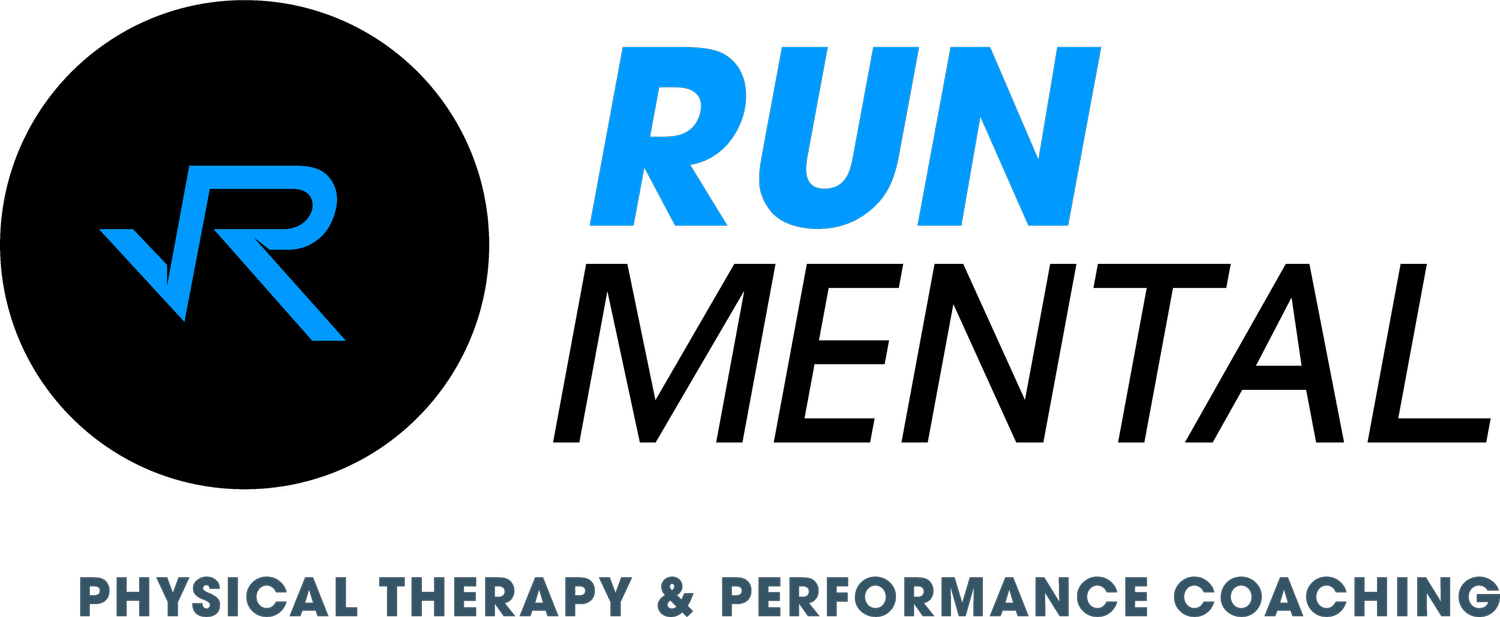Considerations with strength training for runners
The addition of strength training for runners has become more and more mainstream in the past few years and for good reason. The benefits of strength training are far and wide going well beyond the scope of running. Yes, it improves nearly every variable related to performance with no known negative effects, but did you know it can keep you off the ground as you age too! (Avers 2009) And better yet, if you do fall, you can get back up off the ground. Say goodbye to the phrase, “Help! I’ve fallen and can’t get up!”
I must inform you though, to get these benefits there are two caveats. First, You MUST overload the body to produce an adaptation that yields increases in strength and power. Outside of the initial 2-4wks of a program, this only occurs when at 60-70% of your one repetition maximum as a minimum and done at least 2x/wk (Ronnestaad 2014). This is what is usually defined as strength training. Alternatively, this could convert to working at an RPE of around 7/10 or greater. Now you’re thinking, but “I’ve done much less than that and felt so much stronger!” That’s right! You did. If we go back to the first 2-4wks, much of the improvements happen at the neurological level. Meaning your ability to recruit muscle fibers and in a more efficient manner has improved. This allows you to produce more force and with less effort. However, little to nothing has changed about the structure of your muscles, tendons, and bones. (Rio 2018, Popp 2021) These adaptations take months to really see change and are the ones that improve our ability to tolerate greater amounts of tension and compression thus more force, quicker, and reduce the risk of injury.


The second caveat is that balancing your strength work amongst a running plan is hard logistically and physically. Here are some things I am considering when programming for an athlete:
Strength train on a hard or easy day?
How many times per week?
If sore from a prior workout, how might we change things?
How many sets and reps?
Are all exercises going to be heavy?
What body regions do we need to focus on most?
What exercises should we utilize?
Run first or lift first?
How much time is available?
What resources are available?
The list could surely go on, but this gives you a window into things we need to consider when trying to provide an optimal stimulus for a strength adaptation while balancing it with other aspects of training and life.
Strength training for runners can obviously become very complicated and quite easily. However, it doesn’t have to be overly complicated in most cases. There are a few important rules to consider when constructing a strength training plan to supplement/enhance your running.
1) It needs to get done
There are several schools of thought about how to best place this in your week to optimize the adaptations seen from strength work. Ultimately, it needs to get done and at least 2x/wk. As the saying goes, something is always better than nothing. So, for me, if you are tolerating the workload well, meaning the strength work isn’t taking away from your running on subsequent days, then you are good to go!
2) There are three primary muscle groups to target: the calf, the quads, and the lateral hip (Dorn 2012)
Ideally, these get hit with compound exercises which are those such as squats, and heel raises where multiple joints and muscle groups are working simultaneously. You don’t have to work every muscle individually. No one has the time or energy for that anyway.
3) There is no best exercise!
There are an infinite number of exercise variations to choose from. No one exercise is better than another in general. Only those that will yield desired adaptations and those that won’t. The big question to ask is, “Will this achieve the adaptation I am looking for”. In most cases if it is targeting one of those areas or multiple and eliciting a strength adaptation, the answer is yes.
Beyond these three rules, the average runner doesn’t truly need to consider much else. If there is a performance slant to your training in that you are trying to achieve a new level of fitness or in a big training block, then you may want to consider some of the additional questions above.
Below is a skeleton from Dan John I like to use to help me determine what movements/areas to use when programming some strength training for runners.
Squat/knee dominant
Hinge/hip dominant
Upper Extremity Push
Upper Extremity Pull
Accessory (calf and lateral hip)
If this is an area you feel you could use more help or guidance in, check out our individualized strength training program here or schedule a free consultation call with the button below so we can talk about coaching options to get you running strong and confident!


